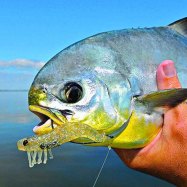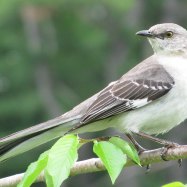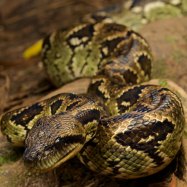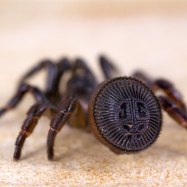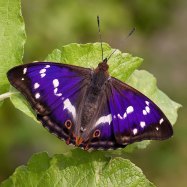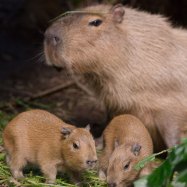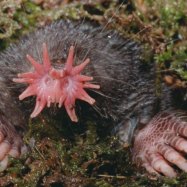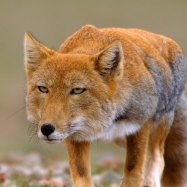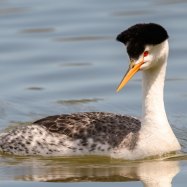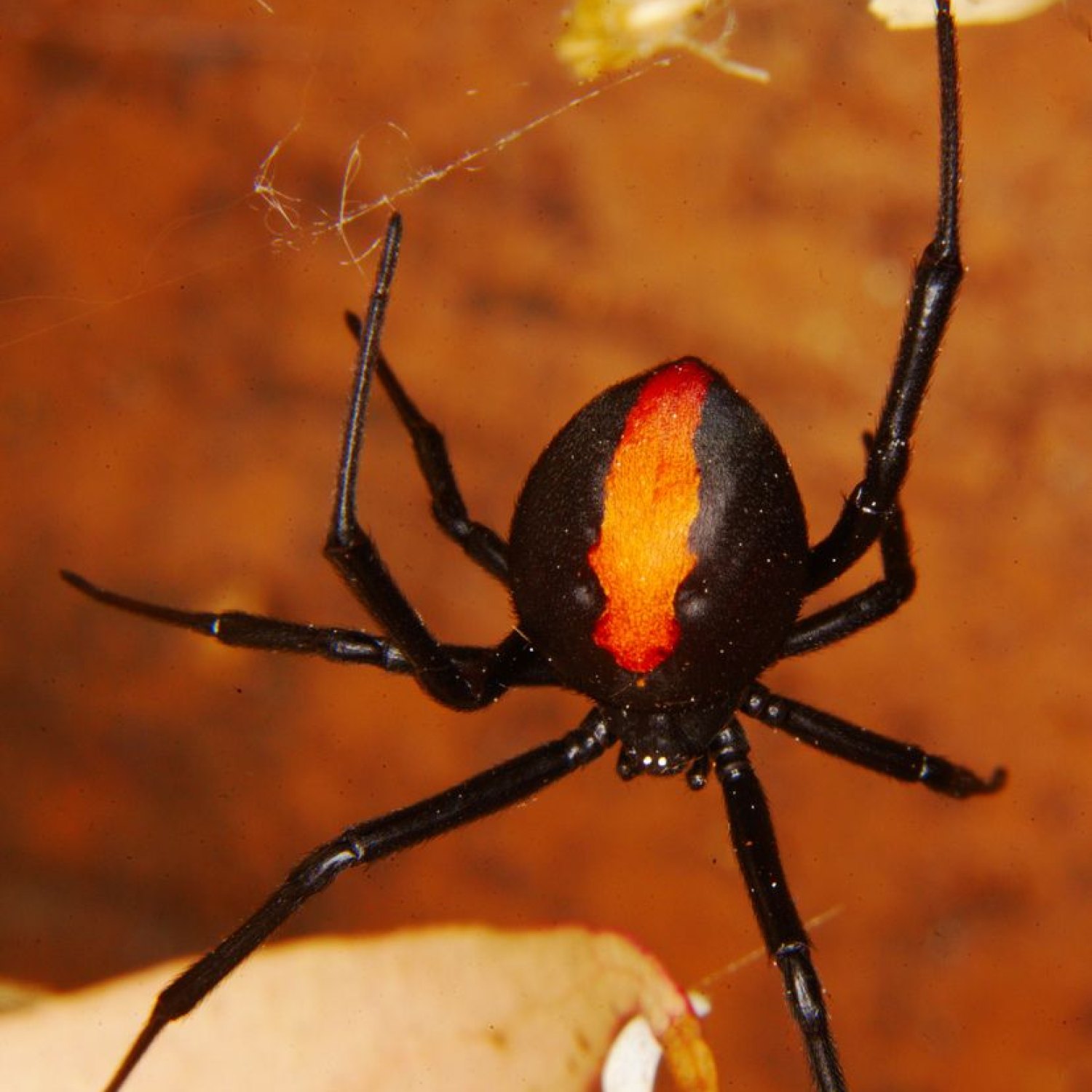
Redback Spider
4-10 mm (female), 3-4 mm (male)
The Redback Spider, found in Australia, is known for its distinctive red stripe on its black body. Females can grow up to 10 mm while males are smaller at 3-4 mm. They belong to the Theridiidae family and have small to medium-sized round abdomens. Beware of their venomous bite!
Animal Details Summary:
Common Name: Redback Spider
Kingdom: Animalia
Habitat: Dry open habitats, urban areas
The Deadly Redback Spider of Australia
The vast continent of Australia is home to a diverse array of animals, from cuddly koalas to fearsome crocodiles. But there is one creature that is both feared and revered - the redback spider. Scientifically known as Latrodectus hasselti, this species is commonly referred to as the redback spider due to its distinctive coloring. Although relatively small in size, this spider packs a powerful venom punch, making it one of the most dangerous spiders in the world Redback Spider.Kingdom of the Redback Spider
The redback spider belongs to the animal kingdom, also known as Animalia. This kingdom is characterized by multicellular organisms that can move, consume and reproduce. As part of the animal kingdom, the redback spider shares traits with other animals such as having a digestive system, nervous system, and the ability to reproduce sexually.Phylum: Arthropoda
Coming from the Greek words "arthro" meaning joint and "podos" meaning foot, arthropods are named for their jointed appendages. The redback spider is classified under the phylum Arthropoda, which includes insects, spiders, and crustaceans. All members of this phylum have an exoskeleton, segmented body, and jointed limbs.Class: Arachnida
The redback spider belongs to the class Arachnida, which includes spiders, scorpions, ticks, and mites. These arthropods have four pairs of legs, two body segments, and typically have fangs used to inject venom. The name "arachnid" comes from the Greek myth of Arachne, a skilled weaver turned into a spider by the goddess Athena Reticulated Python.Order: Araneae
The order Araneae is the largest within the class Arachnida, consisting of over 46,000 species of spiders. This order includes well-known families such as tarantulas, jumping spiders, and orb-weavers. The redback spider belongs to this order and is classified under the family Theridiidae.Family: Theridiidae
The Theridiidae family is commonly referred to as the comb-footed spiders, named for their distinctive comb-like setae on their legs. This family includes over 2,200 species and is found all over the world. The redback spider is one of the most infamous members of this family, known for its lethal envenomation.Habitat and Distribution
Redback spiders are found in a variety of habitats ranging from dry open areas to urban areas in Australia. They are commonly found in the iconic Australian outback, but can also be spotted in cities and towns. This prevalence in urban areas is due to their ability to thrive in human-made structures such as sheds, garages, and outdoor furniture.Feeding Method
As carnivorous predators, redback spiders feed on a variety of insects, including flies, mosquitoes, and beetles. They use their strong, venomous bite to immobilize and kill their prey before consuming them. Redback spiders are known to also consume other small arachnids, making them a formidable predator in their environment.Distinctive Features of the Redback Spider
Redback spiders are easily identifiable due to their unique appearance. They have a black, shiny body with a distinctive red hourglass shape on their abdomen. This marking is what gives them their name and serves as a warning to potential predators. They also have eight eyes, with two large ones in the center and six smaller ones around them.Body Shape and Size
The redback spider is a small to medium-sized spider, with females growing from 4-10 mm and males only reaching 3-4 mm in length. This is significantly smaller compared to other spiders such as the Australian huntsman, which can have a leg span of up to 15 cm. The redback has a round abdomen, which is where its venom glands are located.The Notorious Venom of the Redback Spider
The redback spider is infamous for its potent venom, which is capable of causing illness and death in humans. The venom contains a powerful neurotoxin that affects the nervous system, causing symptoms such as pain, sweating, and muscle spasms. In severe cases, the venom can lead to respiratory failure and death.Geographical Distribution
As the name suggests, the redback spider is found mainly in Australia, where it is considered to be one of the most dangerous spiders. However, it has also been introduced to other countries, such as New Zealand, Japan, and the United States, through imported goods and travel.Country of Origin: Australia
The redback spider is considered an important part of Australia's biodiversity and is commonly found across the continent. It is even considered to be an iconic Australian animal, with its distinctive red marking often used in Australian pop culture.Location in Australia
Redback spiders can be found in all states and territories of Australia, with the exception of Western Australia and the Northern Territory. They are most prevalent in the eastern and southern regions, where the climate is drier and more arid. They are also found in coastal areas, where it is more humid.In Conclusion
The redback spider may be small in size, but it certainly does not lack in impact. With its potent venom and distinctive appearance, it is a force to be reckoned with in the Australian ecosystem. Despite this, it plays a vital role in controlling insect populations and is an important part of Australia's rich biodiversity. While encountering one may be a scary experience, it is important to remember that these spiders do not actively seek out humans and will only bite in self-defense. So the next time you spot a redback, try to appreciate its unique features and its place in the Australian landscape.

Redback Spider
Animal Details Redback Spider - Scientific Name: Latrodectus hasselti
- Category: Animals R
- Scientific Name: Latrodectus hasselti
- Common Name: Redback Spider
- Kingdom: Animalia
- Phylum: Arthropoda
- Class: Arachnida
- Order: Araneae
- Family: Theridiidae
- Habitat: Dry open habitats, urban areas
- Feeding Method: Carnivorous
- Geographical Distribution: Australia
- Country of Origin: Australia
- Location: Commonly found across the continent of Australia
- Animal Coloration: Black body with a distinctive red mark on its abdomen
- Body Shape: Small to medium-sized with a round abdomen
- Length: 4-10 mm (female), 3-4 mm (male)
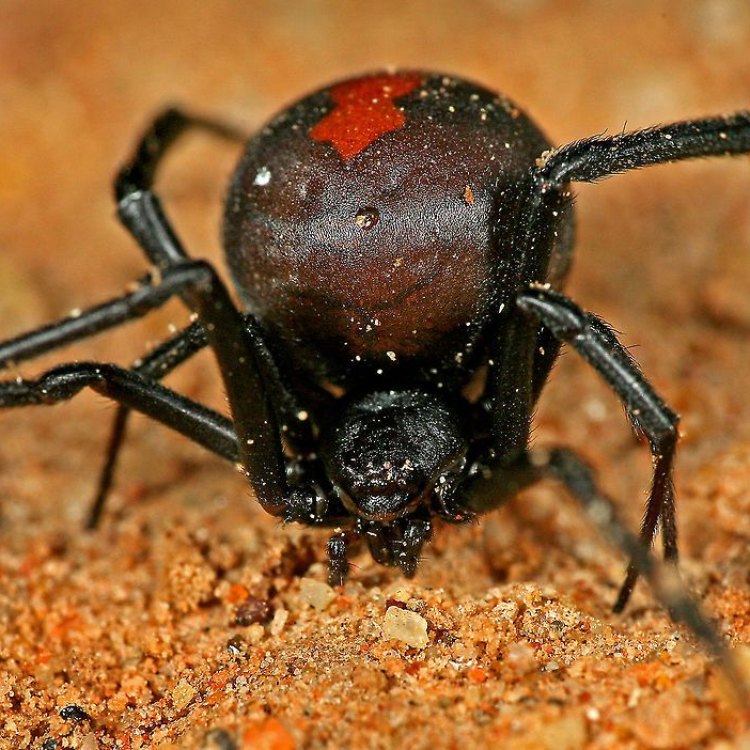
Redback Spider
- Adult Size: 4-10 mm (female), 3-4 mm (male)
- Average Lifespan: 1-3 years
- Reproduction: Sexual
- Reproductive Behavior: Females may consume the male after mating
- Sound or Call: No sound or call
- Migration Pattern: Non-migratory
- Social Groups: Solitary
- Behavior: Aggressive when threatened
- Threats: Predators, habitat loss
- Conservation Status: Not evaluated
- Impact on Ecosystem: Control of insect populations
- Human Use: None
- Distinctive Features: Distinctive red mark on the abdomen
- Interesting Facts: 1. Female Redback Spiders are venomous and can cause serious harm to humans. 2. They are known for their unique courtship behavior, in which the male somersaults and presents himself to the female. 3. Redback Spiders are nocturnal and typically build their webs near the ground. 4. They are closely related to the Black Widow Spider. 5. Redback Spider females are larger than males and have a more potent venom.
- Predator: Birds, reptiles, other spiders
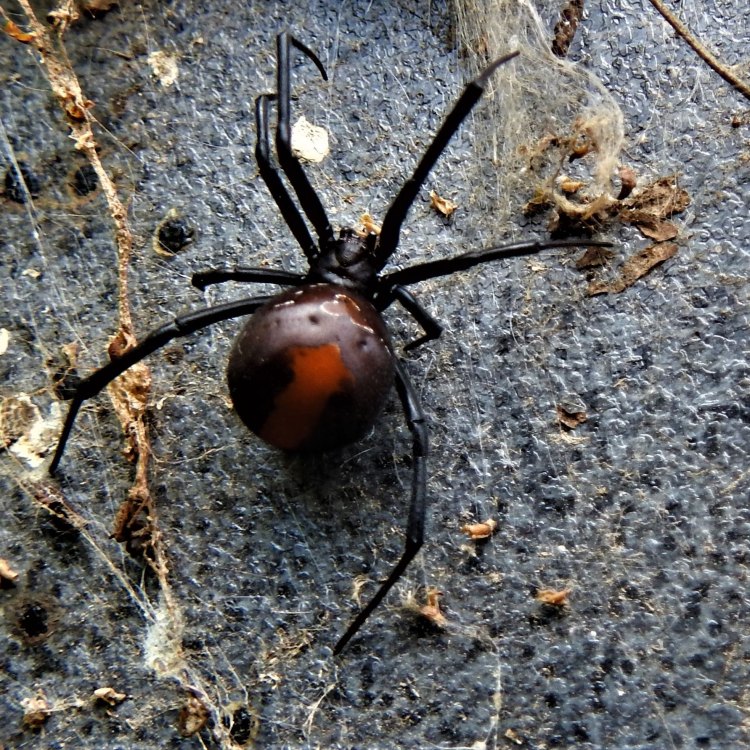
Latrodectus hasselti
The Redback Spider: A Small But Mighty Predator
In the vast world of spiders, one species stands out for its distinctive appearance and venomous nature - the Redback Spider. This small but mighty arachnid is native to Australia and is feared by many due to its strong venom. However, there is much more to this fascinating species than meets the eye.Adult Redback Spiders range in size from 4 to 10 millimeters for females and 3 to 4 millimeters for males PeaceOfAnimals.Com. They have an average lifespan of 1-3 years, during which they reproduce through sexual means. Like most spiders, the male Redback Spider performs a unique courtship behavior to attract a mate - a somersaulting dance that showcases his brightly colored abdomen.
The courtship doesn't always end well for the males, as the females may consume them after mating. This behavior, known as sexual cannibalism, is common among many spider species and serves as a way for the female to gain additional nutrients for herself and her offspring. However, not all males meet this fate as some are successful in escaping after mating.
Interestingly, Redback Spiders do not produce any sound or call. This may seem strange for a species that is known for its aggressive behavior when threatened. When disturbed, they will often exhibit defensive postures and may even bite, injecting their potent venom into their attacker.
Although they may seem intimidating, Redback Spiders are not migratory and prefer to live in a solitary manner Rooster. They typically build their webs close to the ground in sheltered areas such as under rocks or logs. They are also nocturnal, meaning they are most active at night, and will retreat to their webs during the day to rest.
Apart from humans, Redback Spiders have very few natural predators. Birds, reptiles, and other spiders may occasionally prey on them, but their main threat comes from habitat loss. Urbanization and human activities have led to the destruction of their natural habitats, making it harder for them to find suitable places to build their webs and hunt for prey.
Despite their seemingly fierce nature, Redback Spiders are not considered a threatened species. In fact, they are not even evaluated for conservation status. This is because they play a crucial role in controlling insect populations in their ecosystem.
Being natural predators, Redback Spiders feed on a variety of insects, including flies, beetles, and other spiders. This helps to keep insect populations in check, which in turn helps maintain a balance in the ecosystem. Without the presence of Redback Spiders, there could be an increase in the number of insects, which could have a detrimental effect on plants and other species that rely on insects for survival.
While Redback Spiders do not have any significant human use, their presence in the ecosystem is beneficial. They are not used for any commercial or medical purposes, and their venom is not known to have any practical applications. However, studies of their venom have helped scientists understand more about its potency and how it affects the human body.
One of the most distinctive features of Redback Spiders is the bright, red mark on their abdomen. This marking serves as a warning to potential predators, indicating that they are venomous and should be avoided. The rest of their body is usually a dark shade of black, making the red marking stand out even more.
In addition to their striking appearance, Redback Spiders have some interesting facts that make them stand out among other spider species. Firstly, the female Redback Spider's venom is considered one of the most potent among all spiders, and a bite from her can cause serious harm to humans. The venom is a neurotoxin, which affects the nervous system, causing symptoms such as intense pain, sweating, and nausea.
But perhaps one of the most fascinating facts about Redback Spiders is their close relation to the infamous Black Widow Spider. These two species belong to the same genus, Latrodectus, and share many similarities. Both are known for their potent venom and distinctive markings. However, the Black Widow Spider is found in various parts of the world, while the Redback Spider is only found in Australia.
In conclusion, the Redback Spider may be small in size, but it is a mighty predator in its ecosystem. Despite its feared reputation, this species plays a vital role in controlling insect populations and maintaining the balance of its habitat. While it may not have any significant human use, the Redback Spider's unique features and behaviors make it a fascinating species to study and admire from a safe distance. So next time you come across one of these spiders, remember to appreciate its important role in the ecosystem and give it the space it deserves.
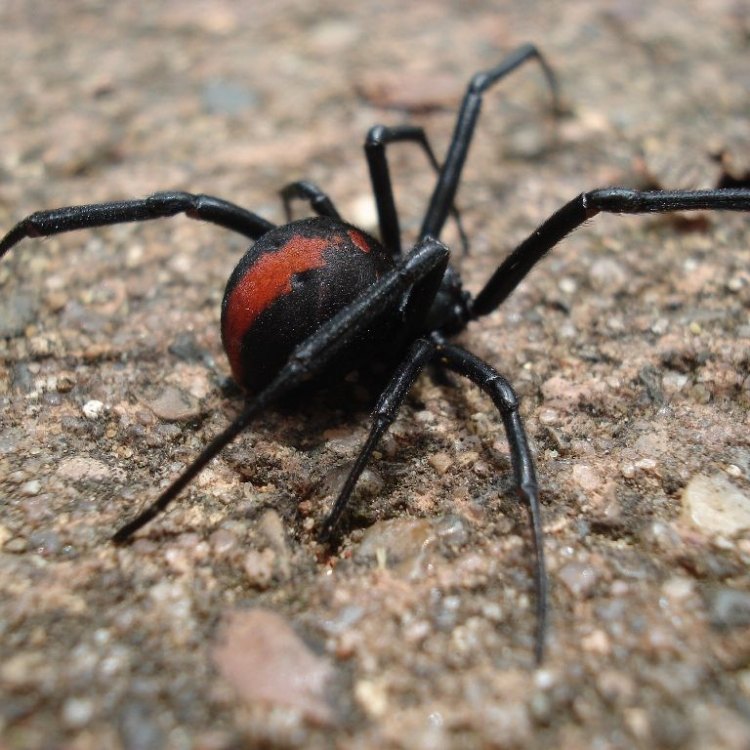
The Deadly Redback Spider of Australia
Disclaimer: The content provided is for informational purposes only. We cannot guarantee the accuracy of the information on this page 100%. All information provided here may change without prior notice.

